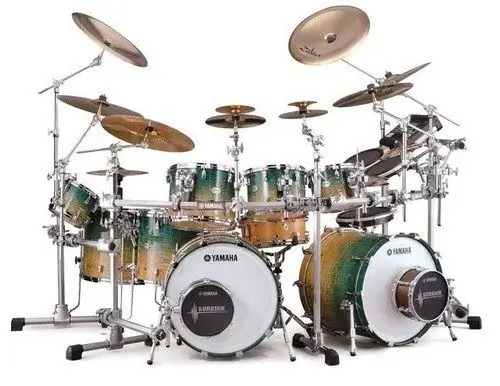The modern world of electronic music opens up access to a huge number of sounds for a musician or sound engineer in a recording studio. The easiest way to create the sounds of an entire ensemble or orchestra is to record the sounds of each instrument individually. How to record (“hammer”) drums correctly?

Instructions
Step 1
Set the microphones individually for each drum. The best microphone position is inside the drum. This will give minimal penetration of external sounds. Cymbals usually do not have individual microphones; for recording, two are enough, which are hung over the drummer's head. This will give you the most vivid picture of the natural sounding of the installation in the given room.
Step 2
Make sure that the drum does not have a squeaky pedal, remove any resonating elements in the kit or in the room. Eliminate all extraneous sound sources, otherwise they will be included in the recording. Drum set - the instrument is loud, it can drown out any sounds, but still observe silence throughout the entire process, even when a pause is created for the sound of cymbals until it completely fades away.
Step 3
Observe the beat timing when playing your drum kit. You can play sounds either earlier or later than the beat. The pace of the game does not change. A method is often used in which the sounds on the cymbals are played in advance, and on the drums with a delay. It is this individual playing of each drummer that gives the unique sound of a particular part.
Step 4
If you cannot record the sound of a real drum kit, use a special quantizer that sequencers offer. Choose from a variety of drum style templates, or create your own. The sound will depend on how you enter notes into the sequencer. To achieve a drum sound as close to natural sound as possible, use an electronic snare drum (pad).
Step 5
Observe the dynamics of the sound when editing the recorded drum parts, while changing the volume of the notes played.
Step 6
Remember that a drum part exists within a particular style of music. Try to choose the appropriate sounds and manner of performance.






